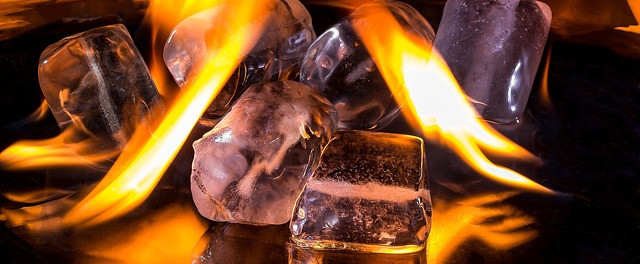It’s widely known that ice therapy and heat therapy are great self-treatment options to reduce pain and help with the healing process of certain injuries. The problem arises when we’re forced to make the decision of which to use. It’s hard enough deciding which outfit to wear and what dinner special to chose at your favorite restaurant, but now we’re expected to know when to ice versus when to heat?! This is madness.
Which Injuries Respond Best To Which Treatments? And Why?
To help with the confusion, let’s break it down and try to understand which injuries respond best to which treatments, and most importantly why that’s so. In general terms we sustain two types of injury when it comes to exercise and sports:
Acute injuries are generally as a result of impact or trauma such as rolling your ankle, falling or colliding with someone. These injuries cause sudden and often severe pain and will result in the area becoming inflamed, tender and painful!
A Chronic injury on the other hand is often referred to as a ‘persistent’ pain that has developed slowly and recurs over a period of time. These niggle pains we often ignore for a long time, such as lower back pain, RSI or the onset of shin splints! For runners shin splints can come and go, often pushed through and if not treated can develop into stress fractures.
When to use ICE:
Ice should be used for acute pain or a new injury that is causing swelling and inflammation.
But why?
After an injury, inflammation is the body’s attempt at self-protection, the aim being to remove harmful stimuli (including damaged cells, irritants, or pathogens), and begin the natural healing process. Unfortunately, this healing process is not always pain free. Applying ice to the acute injury will numb pain and reduce the inflammation. Cold slows down blood flow, thereby reducing pain and swelling.
Guidelines for ICE:
- Set a timer! Ice for a minimum of 10 minutes and no more than 20 minutes at a time.
- Use a barrier between the icepack and your skin to avoid cold burns.
- It is recommended to ice periodically during the first 48 hours after acute injury.
When to use HEAT:
Heat is best for treating chronic (persistent or recurrent) pain and for overworked, sore muscles.
But why?
Overworked muscles become sore because of a chemical called lactic acid, which accumulates when the muscles are put under stress and deprived of oxygen. When there is decreased blood flow to a damaged area, the lactic acid gets stuck, which creates the painful muscle ache. Heat allows those sore muscles to relax and the blood to flow and lactic acid to be removed, giving you some much needed relief.
Guidelines for HEAT:
- Set a timer! Heat is recommended for no more than 20 minute intervals.
- Use a barrier between the heat pack and your skin to avoid burns.
- Heat is not recommended for recent injuries or after surgery when you need to reduce inflammation and swelling. While the warmth might feel soothing, it can increase the inflammation.
What if you have a sudden injury to a muscle?
If it really is a muscle injury (severe, sudden muscle pain after trauma) this is where it gets a little tricky and you’ll end up using a combination of the two. Start with ice for the first few days to help decrease the inflammation and then switch to heat to help relieve the soreness.
Use your best judgement and ask your doctor or physical therapist if you’re still unsure. Physical therapists will often use these ice/heat treatments in conjunction with your therapeutic treatment plan.
Finally, you can apply ICE and HEAT in lots of ways:
Ice packs: Frozen peas or corn, ice cubes in a baggie or frozen gel pack. You can ice beyond 48 hours, until swelling, tenderness or inflammation are gone.
Ice massage: Freeze water in a Dixie cup, peel back the top, and massage the tender area until it’s numb. (Best for targeted icing after injury or for areas too awkward for ice packs, like the elbow or heel).
Cold masks: Place a cold mask, available at drugstores, over your eyes or lay a towel soaked in cold water over your forehead and temples.
Moist heat: Enjoy a bath, shower, hot tub or whirlpool using warm, not hot, water (92-100°).
Heat wraps: Drape a heat wrap, available at drugstores, around your neck like a scarf (great for work or travel).
Heating pads: To avoid burns, remove heating pads if the area becomes uncomfortably warm.
Enhancing your body’s physiology with the proper use of ice and heat at the proper time can help shorten a recovery episode. So, the next time you’re faced with the decision to “Ice Ice Baby” or “Drop it Like it’s Hot”, you’ll know which way to turn.


